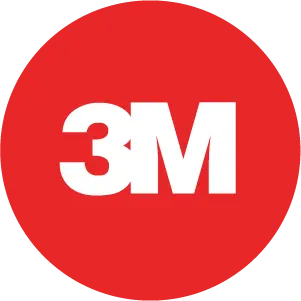
When the concept of energy efficiency was first introduced in the 1970s, the entire process of designing, building, and finishing both residential and commercial spaces began to transform. Due to the introduction of efficient products in recent years, architects and construction companies have taken steps towards environmentally friendly and energy-efficient buildings.
There are many aspects that make a space efficient, such as LED lighting, improved insulation, and efficient windows. In fact, one of the most inherently inefficient features of a building is its windows. With that being said, Low-E glass and Low-E window films like 3M Thinsulate Climate Control Window Film are two solutions that can mitigate the issue of inefficient windows while improving occupant comfort. Since they both serve relatively similar functions, how will you know which one is right for your space?
Table of Contents
The Truth About Low-E Glass
The purpose of Low-E, or Low-Emissivity, glass is to reduce the amount of ultraviolet and infrared light that enters through glass windows and doors, without entirely eliminating natural light from a space. This glass has a thin layer of coating that specifically reflects heat-causing wavelengths of the sun’s light to keep indoor temperatures consistent, while allowing visible light to enter and illuminate the room. This spectrally-selective coating ensures both increased occupant comfort and improved energy efficiency.
The Advantage of Low-E Glass: Increased Efficiency & Comfort
We are all too familiar with the fact that once the temperature drops below a certain point and the heat turns on, our energy bills skyrocket. However, Low-E glass windows have emissivity values of 0.02 to 0.20, which means that 80% to 98% of the room’s heat is reflected back into the room during chilly winter months, regulating temperatures and lowering energy bills. Its ability to insulate against outdoor temperature fluctuations provides increased occupant comfort year-round. Although Low-E glass has considerable insulation ability, there are some downsides that must be considered.
The Disadvantages of Low-E Glass
- Although Low-E glass performs well, the initial investment is steep. The national average cost of replacing existing windows with double-pane low-e glass is $40 to $55 per square foot, not including the cost of window frame replacement. The ROI for Low-E glass is typically around a 20- to 30-year range due to its high initial cost.
- The installation process can be time consuming and disruptive to business. During installation, those within the space will have to relocate as the entire window or door will have to be replaced, hindering business operations from continuing within the space.
- Low-E glass offers relatively low visible light reflectance, which could result in bothersome glare for occupants. Although Low-E glass is incredibly effective when it comes to improving energy efficiency and insulation, its installation isn’t always feasible with time and budget constraints. In these situations, you need a cost-effective and timely alternative.
A Low-E, Cost-Effective Alternative: 3M Thinsulate Climate Control Window Film
Remaining within the budget and meeting deadlines are crucial when it comes to the ultimate success of a project and the profitability of a property. Low-E window films, such as 3M Thinsulate Climate Control Window Film, can achieve similar insulating abilities of Low-E glass at a fraction of the cost.
When you apply 3M Thinsulate Climate Control Window Film to a single-pane window, it improves the insulation to be comparable to that of a double-pane window, and a double-pane window to that of a triple-pane. Not only does 3M Thinsulate Climate Control Window Film improve insulation in the cold winter months, but it also reduces solar heat gain in the summer, leading to energy savings year-round. In fact, many window films can reduce temperatures by up to 16 degrees Fahrenheit and cut energy bills by up to 10%!
Low-E Film’s Impact on U-Value
| Window Type | U-Value Before | U-Value After | Improvement |
|---|---|---|---|
| Single Pane (1/4″) | 1.03 | 0.62 | 40% |
| Double Pane (1/4″, 1/2″ air gap, 1/4″) | 0.47 | 0.35 | 26% |
Definition of U-Value: U-Value measures the heat transfer that occurs through the inside and outside surfaces of glass. The U-Value is a function of temperature and is expressed in BTUs per square foot per hour per degree Fahrenheit (BTU / sq. ft. / hr. / F°). Better insulation systems, including insulating window film, have lower U-Values.
Low-E Film’s Impact on SHGC
| Window Type | SHGC Before | SHGC After | Improvement |
|---|---|---|---|
| Single Pane (1/4″) | 0.82 | 0.53 | 35% |
| Double Pane (1/4″, 1/2″ air gap, 1/4″) | 0.70 | 0.51 | 27% |
Definition of Solar Heat Gain Coefficient (SHGC): SHGC is the fraction of solar radiation admitted through a window, door, or skylight, either transmitted directly and/or absorbed, and subsequently released as heat inside a home. The lower the SHGC, the less solar heat it transmits and the greater its shading ability.
Furthermore, the installation process for window film is less disruptive than that of Low-E glass, allowing business operations to continue as usual. With Low-E glass, it’s likely that you’ll have to replace your entire window, including the frame. If your windows aren’t in need of replacing, Low-E window film eliminates this expense and time burden, as it can be applied directly onto existing glass windows or doors, making the installation process quick and smooth. In terms of energy efficiency per dollar, Low-E window film is the ideal solution to help you remain within your budget and meet project deadlines.
Final Thoughts: Low-E Glass vs. Low-E Window Film
Although Low-E glass provides immense energy savings and improved insulation, it can be costly and disruptive, with a time-consuming installation process. When you need a quick, effective, and affordable solution to achieve both energy savings and occupant comfort, all while continuing business operations, 3M Thinsulate Low-E Window Film is the perfect alternative.

Energy Products Distribution is a Master Distributor of 3M Window Films, 3M Paint Protection Films, 3M Wrap Film Series 2080, 3M Protection Wrap Films, 3M Architectural Finishes, 3M Ceramic Coatings, and Windshield Skin. We sell our products to professional installers throughout the US who provide turnkey installations (labor and material) to end-users in the automotive, commercial, government, and residential markets. Contact us to learn more about the benefits of these products.









